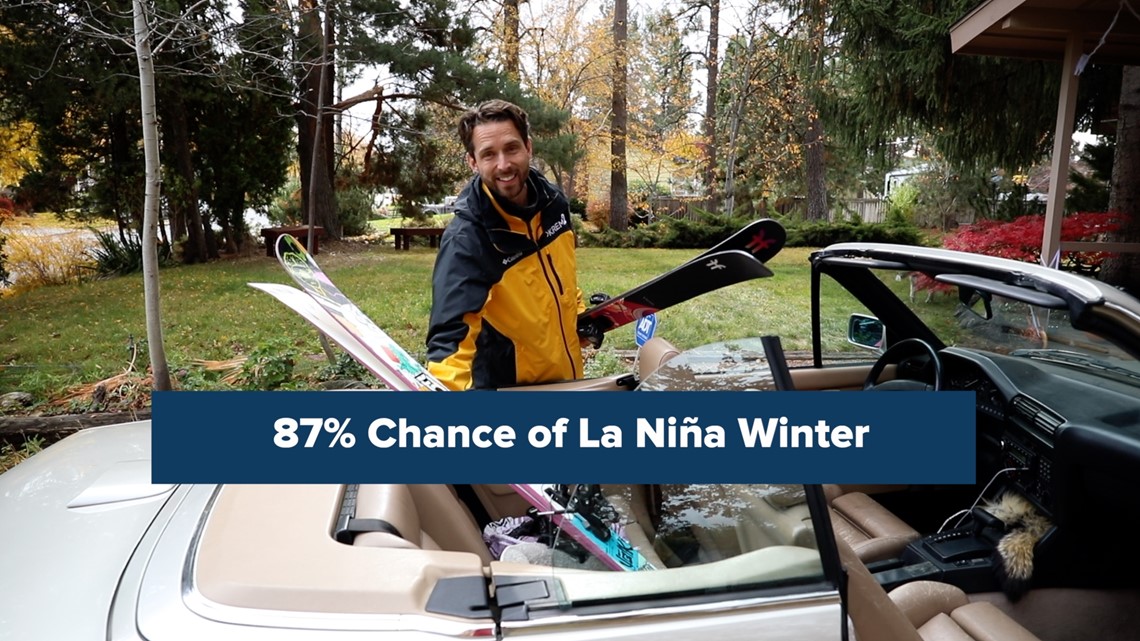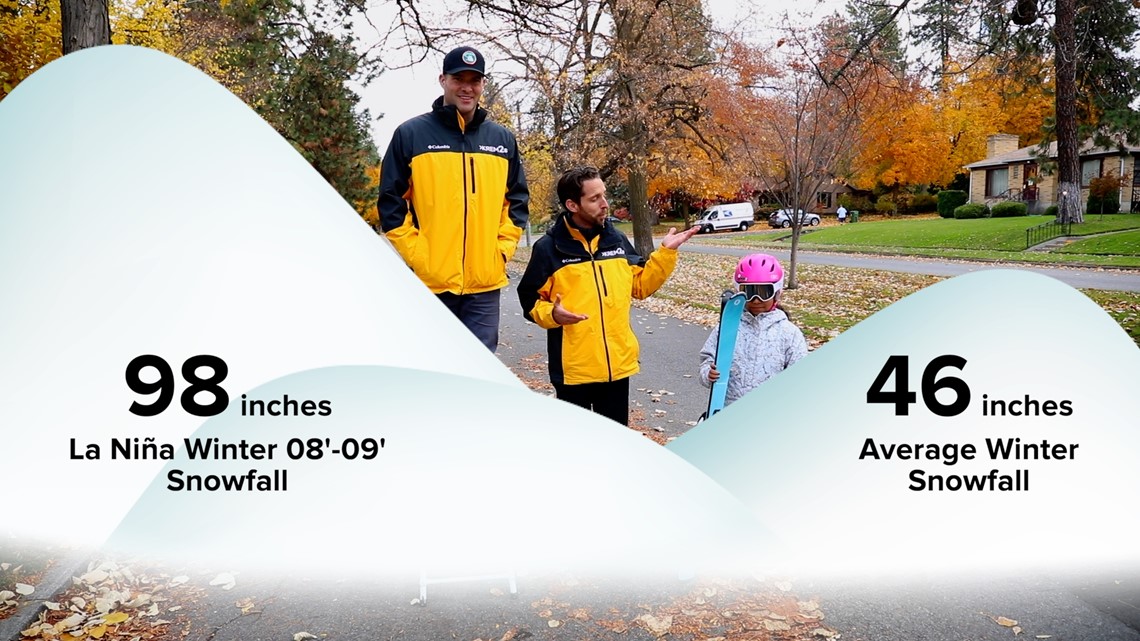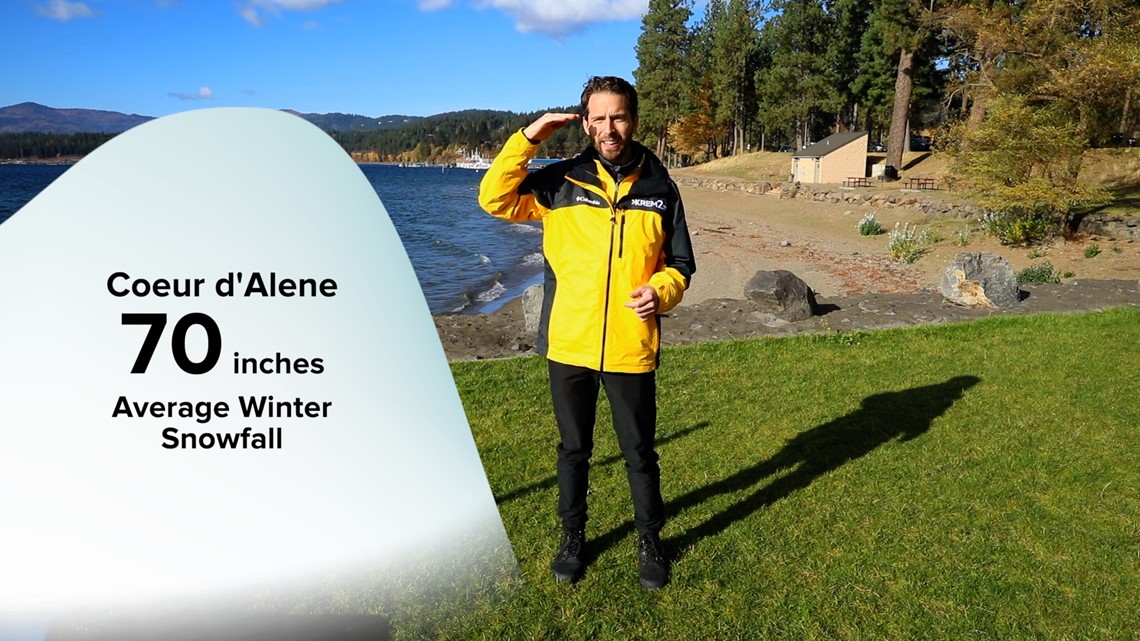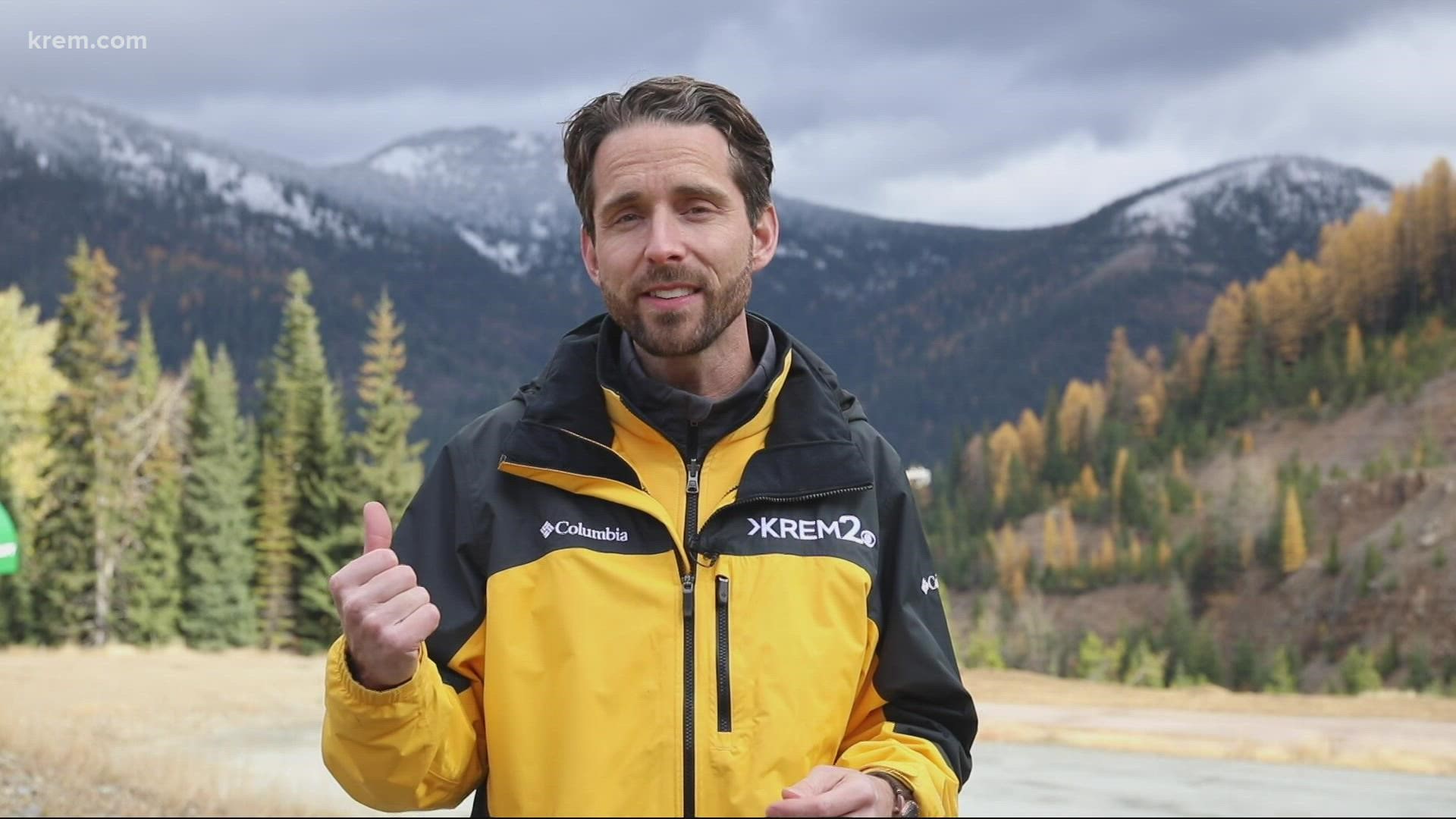SPOKANE, Wash. — This year, KREM 2 Meteorologist Jeremy LaGoo is expecting this La Niña winter to be wet and cold in in the Inland Northwest. Here is his full long-range 2021-2022 winter forecast for Spokane, Eastern Washington and North Idaho.
How La Niña winters impact snow fall
La Niña is the name for colder than normal sea surface temperatures in the equatorial Pacific. The impacts of the cool temperatures changes weather on a global scale. A dip in the polar jet stream over the Northwestern U.S. correlates to more moisture and cooler temperatures.
Believe it or not, last winter’s La Niña gave us more snow than we typically see in Spokane. It was the cycles of warm weather that melted it all away.
In Spokane, our temperatures hover close to freezing through winter. That means small deviations from seasonal norms can have drastic impacts.
Slightly cooler average temperatures historically correlate to higher snowfall amounts across the Inland Northwest. That snow will then likely stick around a bit longer. That's good news for snowmen and sled hills, but that also means you’re going to want the winter tires this season so all of that snow doesn’t slow you down.




How much snow will we see?
A La Niña advisory has been issued for an 87% chance of La Niña conditions in the Inland Northwest this winter. That’s good news for skiers and riders.
The incoming snow is also great news for our ongoing drought conditions in the Inland Northwest. The slow-melting snow not only replenishes our groundwater, but snow in high elevations can keep streams and rivers running strong well into next summer.


An average winter in Spokane gives us about 46 inches of snow, about the height of the average 2nd grader. In the past, La Niña has delivered anywhere from barely 2 feet of snow to more than 8 feet in just one season. Most notably was 2008-2009 where 97.7 inches of snow fell in Spokane. We likely won’t see that much snow this season. Keep in mind, even with cooler temperatures, you won’t have all that snow piled up in your yard. Compacting and melting causes the levels to be much lower throughout the season.
The unique geography of the Inland Northwest means we have drastically different climates that exist within a relatively short distance of each other.


The Central Valley finds itself in the rain shadow of the Cascades and doesn’t typically see as much moisture in a year. Moses Lake might see two feet of snow in a typical year.
Believe it or not, Coeur d’Alene is on the other end of the spectrum. Just 30 miles east of Spokane, the North Idaho city boasts an average of about 70 inches of snow each winter. That means an increase in snow puts the total somewhere north of six feet possible this winter.


Sandpoint typically comes in a little behind Coeur d’Alene each year while Schweitzer mountain boasts an average snowfall of 300 inches. That's 25 feet of snow on average every winter.
How does this compare to last year’s snowfall?
Last winter’s La Niña delivered for the mountains. The Cascades saw a 10-year high when it comes to snowpack, and the Northern Rockies even recorded above normal amounts of snow despite a dry late winter and rapid melt in the spring.
The reason the snow levels were so much greater than normal in higher elevations is simply from the cold that exists in the mountains. The warmer temperatures that brought rain to Spokane throughout winter were not present in the mountains. This winter might be similar in terms of mountain snowpack in the Cascades and Northern Rockies.
Jeremy’s suggestion for enjoying winter
“The optimist in me already has the skis ready to go, but it is important to note- not every La Niña gives us more snow and cooler temperatures. The global weather pattern does favor more snow and cooler temperatures in the Northwest in the months to come.”

